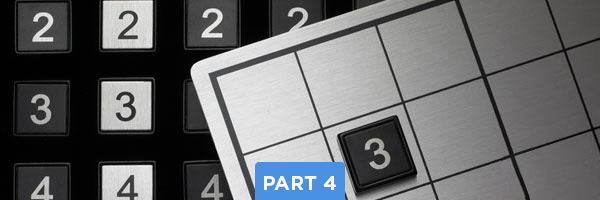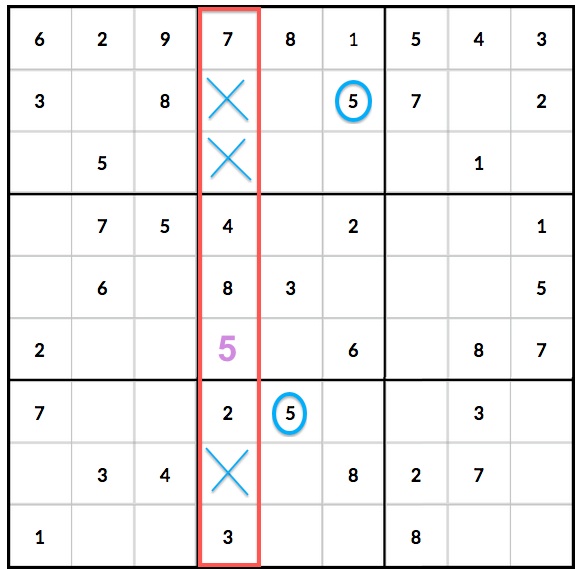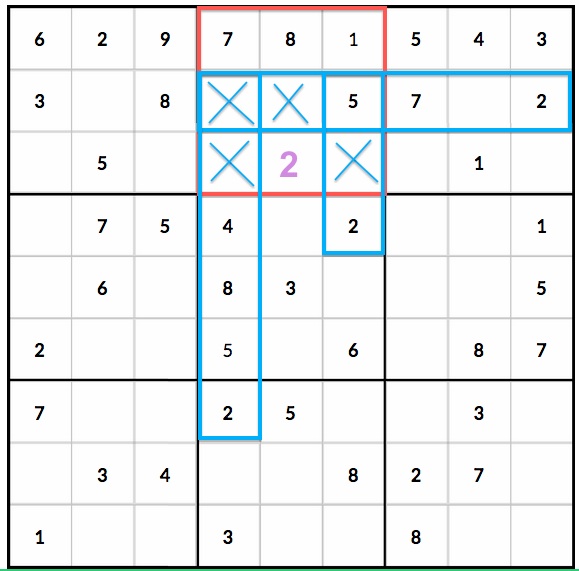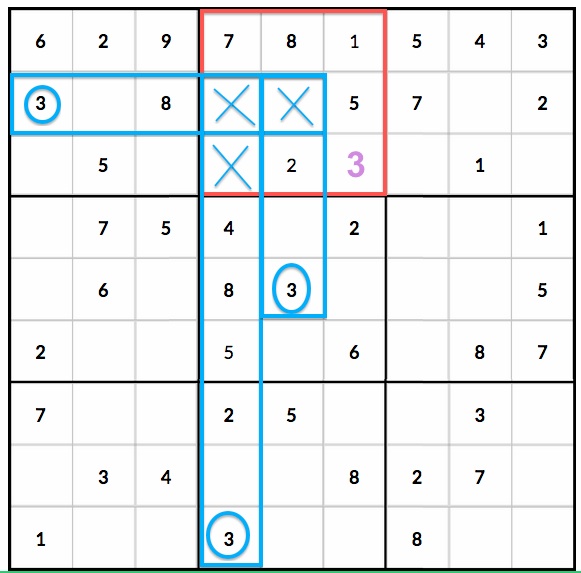Intermediate Sudoku Solving Techniques – Part 4: More Multi-Direction Solutions

If you want to get better at solving Sudoku puzzles, it helps to devote some time to analyzing the thought process behind solving actual puzzles. This article will discuss some advanced techniques for finding the answers and filling in spaces on your Sudoku grid.
If we look at this grid, let’s start by looking at the column outlined in red. There are four empty spaces to fill, and we know that those spaces must contain the numbers 1, 5, 6 and 9. We can get some immediate clues by looking to the top and bottom squares, which contain number 5s (circled in blue) – this means that the empty spaces in the red column within those squares cannot contain number 5 (marked with Xs). This means that number 5 must be placed in the empty space in the lower left corner of the middle square – marked in purple.

Now that we’ve placed the number 5, we can look for other examples of how to solve this Sudoku puzzle by looking for clues from multiple directions. In the top center square (outlined in red), there are four empty spaces which must contain the numbers 2, 3, 4, 6, and 9. If we look to the right and below, we can see some number 2s in the middle row, right column and left column (all outlined in blue). This helps eliminate four spaces (marked with Xs) which cannot contain number 2. That means the number 2 must belong in the bottom row, center column (marked in purple).

This is another example of how to get clues from multiple directions – even if a square has lots of empty spaces, there might be plenty of good clues nearby to help solve the puzzle.
Now that we’ve placed the number 2, let’s take another look at the top center square (outlined in red) to see if we can solve any other spaces.
The square still has four empty spaces, which must contain 3, 4, 6, and 9. If we look to the neighboring squares, we can see number 3s (circled in blue) in the center row, left column, and center column.
This eliminates three spaces (marked with Xs) and proves that the number 3 must be placed in the lower right corner (marked in purple). This is another way to solve spaces by looking outside the square in multiple directions at once.

Solving Sudoku puzzles requires time, effort and practice. Sometimes you might need to take a break and look at the grid with fresh eyes. But in time, as you become more comfortable at spotting opportunities, the Sudoku grid will start to open up and make its clues more apparent.
What do you think about this? What advanced Sudoku techniques have you used? Leave a comment and let us know!